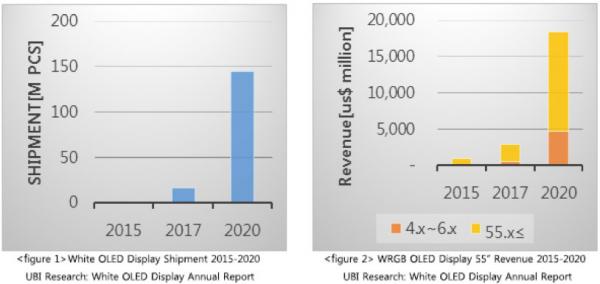UBI Research sees fast growth ahead for white-OLED displays (WRGB) in the next five years. Currently WRGB is only used in OLED TV panels (made by LG Display) and all OLED microdisplays, but UBI says the technology will be adopted in small and medium sized panels as well.

UBI sees over 150 million WRGB OLEDs produced in 2020, out of over a billion OLED displays in total - so WRGB displays will account for 15% of the OLED market. Not all of these will be large OLED TV panels of course. In terms of revenue, WRGB OLEDs will generate over $13 billion in 2020 - most of which will come from large-sized OLED panels.
As we said, currently WRGB is only used in LGD's large-sized OLEDs, and all small-sized AMOLED panels use a direct-emission RGB structure. In the past we have seen WRGB prototypes from Innolux, JDI and BOE, but these aren't in production yet. It's important to note that WRGB is less suitable for flexible panels and indeed even LGD's flexible AMOLEDs now in production use a direct-emission structure. Some reports suggest that Samsung is considering a switch to WRGB structure for their OLED TV panels.
WRGB is easier to produce and results in higher yields - and this technology enabled LG Display to mass produce large OLED panels at a comparably low cost. But direct-emission displays are more efficient, brighter and contain less components and thus could be made cheaper in the long run. eMagin for example is moving to direct-emission microdisplays which will increase the performance dramatically.

